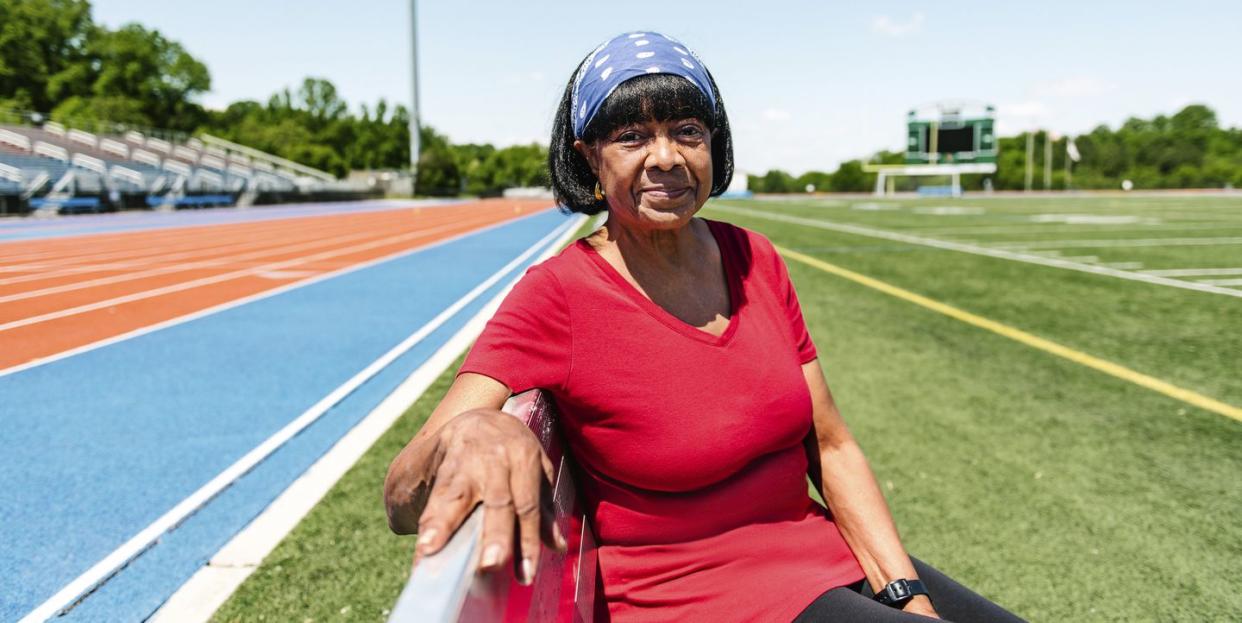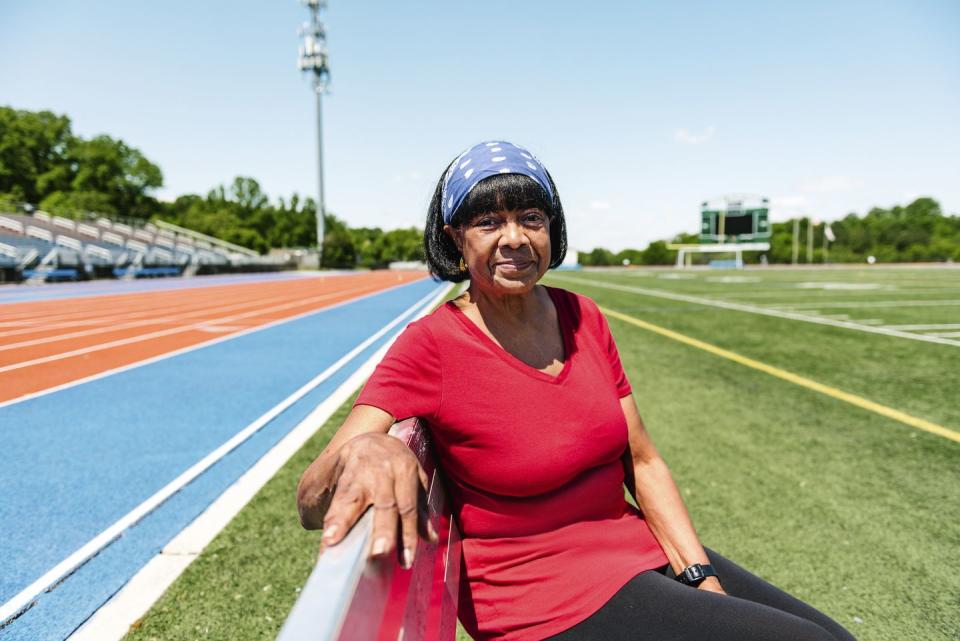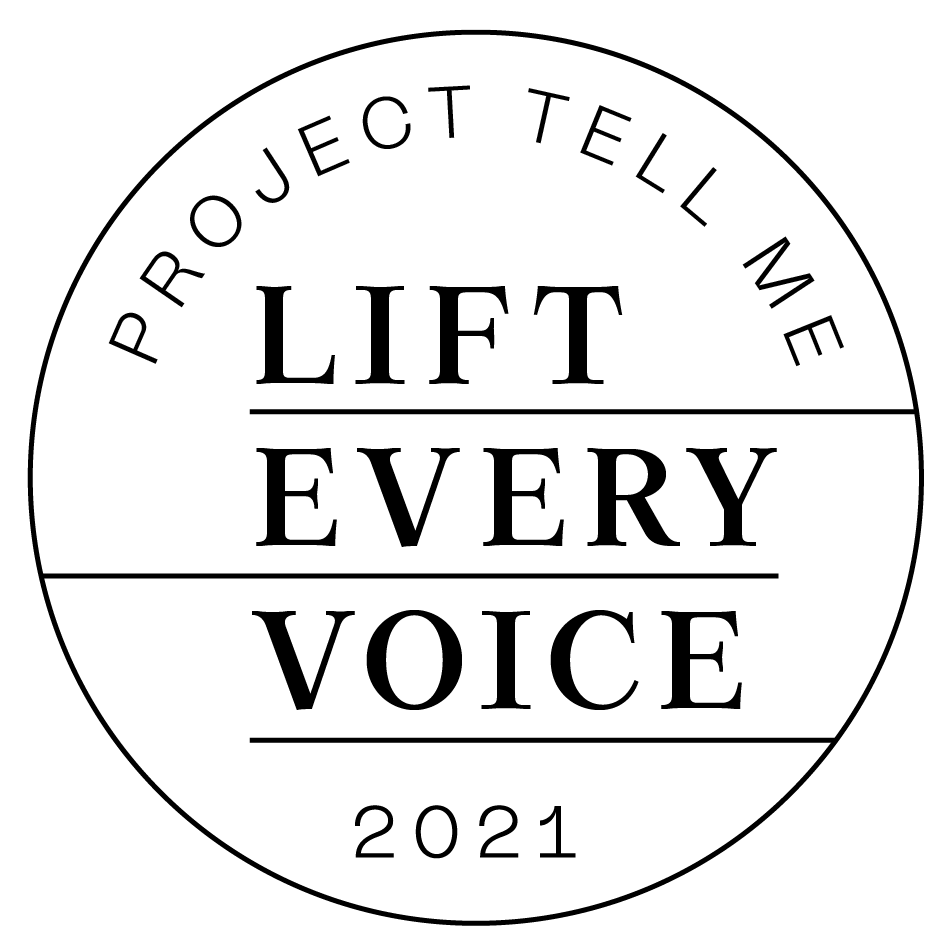What Olympian Lillian Greene-Chamberlain Has Learned in a Lifetime of Running

“Hearst Magazines and Verizon Media may earn commission or revenue on some items through the links below.”

Interview by Elizabeth Okosun/
Photograph by Erin Douglas
When Dr. Lillian Greene-Chamberlain was a child growing up in Harlem in the late 1940s and early '50s, she remembers, she was told she shouldn’t compete in sports: “You can’t do that; you can’t play that; you might get hurt.” She pushed past the opinions of naysayers and went on to become the first U.S. national champion in the 440-yard run, as well as the first African American woman to represent the United States internationally in 400-meter and 800-meter races in international competition. Greene-Chamberlain, who later served as the first director of the Physical Education and Sports Program for the United Nations Educational, Scientific and Cultural Organization (UNESCO), speaks fondly of her time breaking barriers alongside other female athletes. “We didn’t have role models,” she says. “We were our own role models. We stepped over hurdles. We supported each other, and we were fearless.”
Elizabeth Okosun: Can you tell me a little bit about your childhood?
Lillian Greene-Chamberlain: My journey began at 8 years old when a New York City patrolman discovered me racing and beating the boys in my elementary schoolyard. He enrolled me in the Harlem Police Athletic League, and by the time I was 12, I received the PAL’s Athlete of the Year award for participation in track and field, basketball, and softball.
EO: What was it that made you choose track and field above the other sports?
LGC: Track was my opportunity to see the world, that’s how I saw it. It was a sport where I could travel. Ice skating was more recreational. With basketball, you had to depend on various tournaments. Track and field was universal. There were many more opportunities to participate. In basketball, you’re a guard; you’re a forward. In track, I could run, long jump, high jump, put the shot, throw the discus. And it was an opportunity to see the world, and to interact with people who were a lot different from you. I traveled all over the world: Russia, Poland, Hungary, Greece.

EO: Those are very white countries you were going to in the '50s and '60s. How did they react to seeing a Black woman competing on their level?
LGC: They say the sun never sets on the British Empire, so in Great Britain, whether it’s countries in Africa or the Caribbean, they were used to seeing people of color. But with Russia, Poland, and Hungary I was an anomaly. I did my research and my homework. I asked questions, I read books. I learned Russian phrases phonetically to be able to communicate with the Soviet athletes and citizens. The athletes, both male and female, sought me out to communicate, and seemed genuinely interested in the warm, friendly way our integrated U.S. team worked out together. People stopped me to speak, touch my hair and skin, were shocked that I could speak their language, and left all kinds of gifts and souvenirs for me at our hotel.
EO: What is it about running that made you so passionate about track and field?
LGC: Running opened up the world to me. Because of running, it was possible for me to travel, to meet people, to see other places, to ask questions, to compare answers. Also, you don’t need any special equipment; all you need are athletic shoes that support you. It’s a freeing activity. I didn’t need special skates. I didn’t need a basketball, I could run by myself. I didn’t need a team. And, it’s something you can do while you’re thinking, while you’re meditating, while you’re planning.
EO: What are some of the things that go through your mind as you’re running?
LGC: I’m thinking about the state of the nation. I can’t solve the problems when I’m running, but I can determine the way I allow them to affect me. I don’t run with headphones on because I want to have a clear mind since I plan when I’m running. In Paris, I used to love to do that every day. I like to run in the open air where there’s plants and clean air.
EO: After competing in Europe, you attended Colorado State University. How did you end up there?
LGC: Although I had just made the U.S. team that competed in Russia, Poland, Hungary, and Greece, we were back in the United States the next year for the 1959 Pan American Games, which were held in Chicago. I won the exhibition 400-meter event and I set an American record. A Colorado State University official was at the meet. She asked me if I would consider transferring to C.S.U. to assist in establishing the first intercollegiate track team in the school’s history. I realized that I would have to find a way to pay for my tuition, by working on campus, because C.S.U. didn’t offer athletic scholarships to women. I said, “I’ll come if you do two things. I want to learn how to ski, and if you get me a horse, I want to learn how to ride.” And they agreed.
EO: Why those two things, skiing and getting a horse?
LGC: In Harlem, where do you learn to ski? In Harlem, where would I ever get to ride a horse? I wanted that experience. Colorado? That’s horse country. Skiing? Aspen, Colorado.
EO: How did it feel knowing that you were so instrumental in starting their first-ever women’s track and field team and they wouldn’t give you a scholarship?
LGC: It’s not that they wouldn’t give it to me. When I arrived at C.S.U., there were only two colleges in the United States that offered track and field scholarships to females: Tuskegee Institute in Alabama and Tennessee State University in Nashville. Women’s athletics at C.S.U. were primarily intramural rather than intercollegiate. So I worked in my dorm’s cafeteria to support my education. In 1962 I was placed on the Dean’s List, and I earned the first athletic scholarship for a female athlete in C.S.U.’s history. And the Lillian- Greene Scholarship Fund was established with the assistance of the Denver Post, a group of sororities, and individual donors. I graduated in 1963 with a Bachelor of Science degree in exercise and sport science. In 1993, I was inducted into the C.S.U. Sports Hall of Fame. I returned to deliver the commencement address to Doctoral and Master’s degree graduates in 1994, and I talked to them about the world that doesn’t include you or doesn’t see you. I wanted them to see that I looked beyond the obvious stumbling blocks in my way because I didn’t see them as stumbling blocks: They were stepping stones. Those were hurdles that I just flew over.

EO: Nowadays it’s the norm for athletes to receive scholarships while they attend college. There are people saying that college athletes deserve to get paid. What are your thoughts on that?
LGC: Many 17-year-olds can’t even manage $5. Give a 17-year-old $5,000 and see what they do with it. Before you just roll out the money, there has to be a coherent plan so that you’re not just spoiling young people. But we also have to make the schools responsible and ensure that they’re being fair to the young people.
EO: You were the UNESCO director of Physical Education and Sports for 10 years. What kinds of things did you implement during your time there?
LGC: I built schools, I trained teachers, I wrote curriculums for governments. I was responsible for the conception, planning, development, and implementation of all projects, programs, and activities related to physical education and sport in the, at that time, 161 UNESCO member nations throughout the world.
EO: Were you ever met with resistance when you were sent to help in these countries?
LGC: Oh, yes. And that’s where you don’t dictate; you have to understand. If I’m in China, I’m Chinese because I can’t impose America’s values, customs, and norms. It’s important to understand the politics, norms, and religion of the country, just in terms of setting up the program, knowing if people are comfortable, and how cultural elements interact with what will be allowed. My decade-long tenure was notable for the challenges I faced in carrying out my duties as a female working in a predominantly all-male bastion throughout the world.
EO: What was the most life-changing thing you did for the people you served?
LGC: I can’t say one in particular, but I would say getting to open the eyes of the elders, because it’s difficult to effect change in customs and culture. I came into this world with an assignment and I can’t see a problem that I won’t try to remedy.
EO: You said you came into this world with an assignment. What do you think that assignment is?
LGC: My assignment is to give, to be kind, to assist, be considerate, helpful, respectful, gracious, patient, and generous.
EO: Do you think you’ve completed your assignment to the best of your ability?
LGC: My assignment stops when I stop breathing. My assignment has been so multifaceted, with so many aspects that I never imagined. Living in Paris and working for the United Nations for a decade, being of service to so many different cultures—do you know how fortunate I am? When you receive that kind of blessing, you have to share. And the more I share, the more I receive.
EO: What are three pieces of advice that you would give Black female athletes trying to make a way in their chosen sport?
LGC: Don’t be afraid to be the first one to try to accomplish something. When you are the first to achieve something, you can’t really make a mistake, because no one has done it before. Just because a door is closed today, don’t assume it’ll be closed tomorrow. Be strong and push it open. Don’t cut corners. Also, you have to prepare for when the cheering stops.
EO: What about for young Black people in general who need advice for the future?
LGC: Don’t be afraid to embrace this rapidly changing world. Be courageous, creative, and steadfast in pursuit of solutions to the enormous issues that you will be facing. Don’t be afraid to ask questions. It’s all right to stand out from the crowd; that could be a good thing, if it’s a good thing that you’re doing. Find a deeper connection with people who have been successful. Pay attention to details. Be reliable. Do not lose your sense of curiosity. Test your limits. Keep an open mind. Be of service to your community and strive to give something back to society. Participating in sports gave me confidence, self-esteem, and a sense of empowerment that I could be successful in anything that I attempted, through realistic goal-setting, hard work, persistence, and courage. It prepared me for the serious competition of life, and I used the lessons I learned as tools to succeed in progressing from the classroom to the locker room to the board room.
About the Journalist and Photographer
Turn Inspiration to Action
Consider donating to the National Association of Black Journalists. You can direct your dollars to scholarships and fellowships that support the educational and professional development of aspiring young journalists.
Support The National Caucus & Center on Black Aging. Dedicated to improving the quality of life of older African Americans, NCCBA's educational programs arm them with the tools they need to advocate for themselves.
Credits: Erin Douglas: Creative Theory Agency
This story was created as part of Lift Every Voice, in partnership with Lexus. Lift Every Voice records the wisdom and life experiences of the oldest generation of Black Americans by connecting them with a new generation of Black journalists. The oral history series is running across Hearst magazine, newspaper, and television websites around Juneteenth 2021. Go to oprahdaily.com/lifteveryvoice for the complete portfolio.

You Might Also Like

